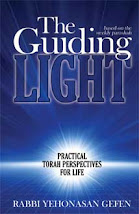Every Shabbos, observant Jews throughout the world retire from their hectic daily lifestyles and refrain from creative activity. However, it is very important to develop an accurate understanding of the true meaning of 'Shabbos rest'; what does it mean to properly 'observe' Shabbos in all aspects?
The commentaries note that proper observance of Shabbos involves far more than merely relaxing after a hard week. The earliest source of this idea is the Torah itself: "The Children of Israel shall observe the Sabbath, to make the Sabbath an eternal covenant for their generations." Some commentaries explain that the instruction to 'make' the Shabbos means that a person needs to make an active effort in order to properly fulfill Shabbos . In this vein, they write that there are two aspects to observing Shabbos - one is refraining from forbidden melacha (creative activity),and the other is making Shabbos a positive spiritual experience.
The Ksav Sofer zt"l uses this approach to explain an enigmatic Medrash; the Medrash says; "When did Yisroel observe the Sabbath in a fitting manner? In the desert..." The Ksav Sofer asks what the Medrash means by the phrase, 'in a fitting manner. He explains, "it seems to me that the Mitzvo of Shabbos is to observe it for the sake of Hashem, because Hashem blessed the seventh day and made it Holy. And one should not keep the Shabbos and refrain from activity in order to rest from his work; one who rests from his work because he worked hard does not keep Shabbos in a fitting manner.." He continues that when the Jewish people were in the desert they effectively refrained from melacha the whole week because they did not need to work to support themselves. Therefore, their observance of Shabbos must have involved far more than merely refraining form melacha because that would not express any uniqueness about Shabbos itself. What did they do on Shabbos? He explains that that their shemiras Shabbos (Shabbos observance) represented an acknowledgement that Hashem created the world in six days and rested on the seventh. Accordingly, they focused on strengthening their emuna and relationship with Hashem.
In a similar vein, the Chofetz Chaim zt"l explains that their are two levels of shemiras Shabbos. We begin one of the famous Shabbos zemiros (songs), 'Kol Mekadesh Shevii', praising those who keep Shabbos, "All who sanctify the seventh day in a fitting manner; All who properly guard Shabbos from desecrating it." The Chofetz Chaim asks that this verse seems to repeat itself with its two descriptions of Shabbos observers. He answers that it is describing two levels of people with regard to their observing of Shabbos. The second part of the verse refers to people who are careful not to desecrate Shabbos by doing forbidden melacha, however they do not make it more Holy through their thought, speech and actions. The first part refers to those who do elevate the Shabbos in such a way, therefore they are described as those who sanctify Shabbos. The zemer continues, telling us that these people will receive great reward according to their actions. The Chofetz Chaim explains that both levels of people will receive great reward for keeping Shabbos, however the degree of reward varies according to the positive actions exerted to make it a Holy day.
The Radak explains further what it means to make Shabbos a more positive holy experience. He writes that there is a Mitzvo to eat good food on Shabbos in order to distinguish it from other days. He continues that "this will help him remember the Creation and that Hashem began the world from nothing and that He rested on the seventh day. From this [awareness] he will praise G-d and glorify Him in his mouth and heart, and his soul will feel pleasure on it (Shabbos)." The Radak tells us that the purpose of Shabbos is to remind us of Creation and thereby arouse ourselves to praise Hashem.
In this vein, my Rebbe, Rav Yitzchak Berkovits Shlita recommends devoting some time on Shabbos to contemplating the wonders of Creation and developing ones sense of Emuna and wonderment at the miracle of Creation. Without an active effort at such contemplation there is a significant risk that Shabbos will remain merely as a day to rest and recuperate when it is meant to fulfill so much more.
In a more general sense, it is very important to involve oneself in spiritual pursuits on Shabbos. Merely sleeping away the Shabbos is not a true fulfillment of this Holy day. Moreover, throughout the week, a person may excuse himself to some degree from learning Torah because he is busy supporting his family. However, on Shabbos there is no such excuse and it is essential to devote as much time as possible to learning on Shabbos. The Ben Ish Chai writes that every word of Torah learnt on Shabbos is rewarded one thousand times more than Torah learnt in the other days of the week!
Shabbos is many Jew's favorite day of the week - this should not simply be because one has more time to rest on Shabbos. Rather Shabbos gives us that unique opportunity to develop our relationship with Hashem. May we all merit to keep Shabbos in the most fitting manner.


